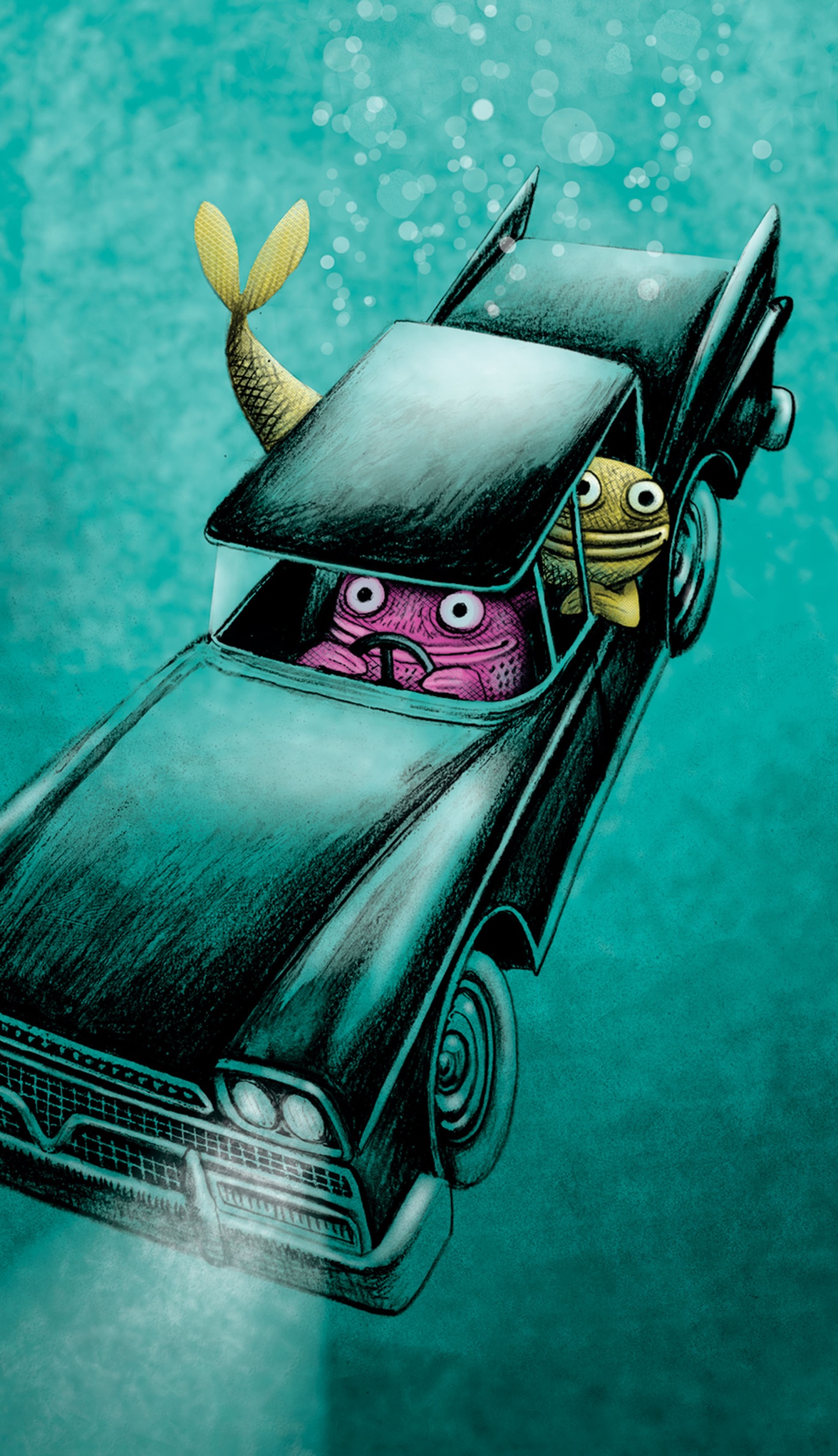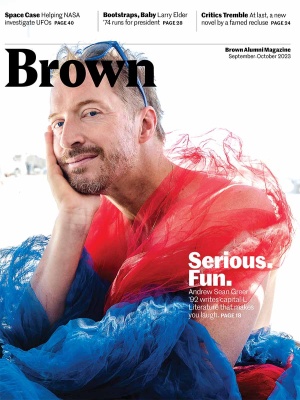Bear Tales: The Black Horse Rides
Roommates tackle a spectacular senior project
This issue, we thought we’d try something new. We’re asking you for stories about your time at Brown, and we’re starting with a classic: roommates. Please tell us your stories, good, bad, or ridiculous. And here’s one from Eric Schurenberg’75, chair of the BAM Board, to get us started.
Email your submissions (the shorter, the better chance we can publish in full) to [email protected], with Bear Tales in the subject line.
At one point in our senior year, my roommate Tim and I decided that we deserved a car. We had no capital to buy one, really, and certainly no recurring income to park it at one of Brown’s lots. But mobility beckoned, and after scouring newspaper ads, we found a minimally viable vehicle in Woonsocket. Tim and I scraped together $110 and brought back to our apartment on George Street a rusty, hulking 1958 Rambler Ambassador. We called it the Black Horse, after a popular beer brand at the time.

Freedom! Well, not exactly. The hassle of owning a car without the wherewithal to house and maintain it quickly outweighed the benefits. The Black Horse was a magnet for parking tickets, and it gulped a quart of oil almost daily, a sign of a seriously unwell engine we could not afford to fix. It was no surprise—and actually a relief—when the Horse blew a piston on I-395 a few months later. The car could still move slowly under its own power, the broken guts of the engine kicking up a wake-the-dead racket. But it was clear: The next stop was the junkyard.
Tim had a different idea. He had designed his own film major by combining courses at RISD and Brown—thank you, Open Curriculum!—and he had yet to make the film that would determine his final grade. The Black Horse would star in his senior thesis.
Tim’s roughly 10-minute film was called (for reasons I can’t recall) But What About the Rock? Shot on 8mm film to the soundtrack of a pulsing drum solo by Taj Mahal, it follows the Black Horse around campus streets. But the story really begins when the car collects a sheaf of parking tickets, as it did in real life, and the actor playing the owner kicks one of the wheels in frustration, as the owners more than once did in real life. The hub cap pops off and as the owner watches it roll down College Hill he fantasizes a vengeful fate for the car.
This is where the filmmaking got interesting.
Enlisting one of the few other classmates we knew who had a car, we towed the Black Horse to the shore, one of those dramatic New England spots where granite cliffs plunge into the ocean. Tim set the car atop the bluff, beautifully lit. Then, with the camera set to shoot single frames, he and I began to pound on the car. With sledgehammers.
At this point, dear reader, I ask you to imagine yourself a 20-year-old male and allow that pounding on a big machine with sledgehammers could actually, in the moment, be a hell of a lot of fun. And that’s not just my opinion. A young hiker passing by stopped to watch us and, finally, couldn’t resist the urge to ask to join in. Of course we said yes.
Tim and I and our new stage hand gave the car several rounds of beating. After each, Tim would shoot three frames. Then we’d go back to beating. When the segments were spliced together, the effect was one of the car seeming to crumple before your eyes. (Or in the mind’s eye of the car’s frustrated owner.) Crude by CGI standards, but hey: There weren’t computers back then.
Then the climax: With the car crumpled but still drivable, and cameras set at strategic points, I floored the gas pedal, held it in place with a brick, and steered towards the edge of the cliff. Once it had lumbered close enough that I could be sure it would go over, I jumped out. The Black Horse frumped down the cliff slowly then picked up speed for a final plunge. It floated for a second, its finned 1950s-era chromed rear end in the air, then disappeared.
When Tim screened this climactic scene to his class of aspiring filmmakers, the room fell silent. It seemed to me that the dominant emotion in the room was unadulterated, paralyzing envy. The teacher cleared his throat. “That was our big-budget film submission for the evening,” he said. Tim got an A.
After graduation Tim went to Hollywood, where he obviously belonged. He became one of the industry’s most sought-after location scouts, working closely with well-known directors on truly big budget films and commercials. While he’s been out of the business for a while, many of the iconic vistas of Westerns and some of the austere earthly settings that are supposed to seem like other planets in sci fi films—you’ve seen them—are his locations.
There’s one location he has visited only once, as far as I know: The scene of the Black Horse’s Beau Geste grave. As he climbed down the bluff to the place the car was last seen, two scuba divers came out of the water. “Did you see anything down there?” Tim asked. “Yeah,” they replied. “There’s an old car about 20 or 30 feet down. It’s very cool to visit. A lot of wildlife down there has made it their home.”





